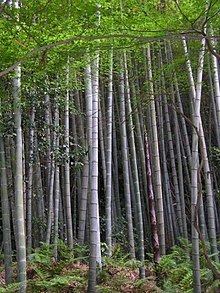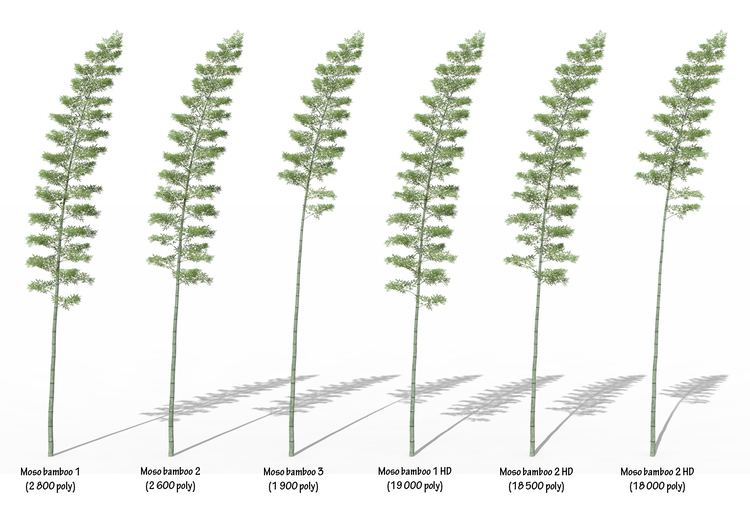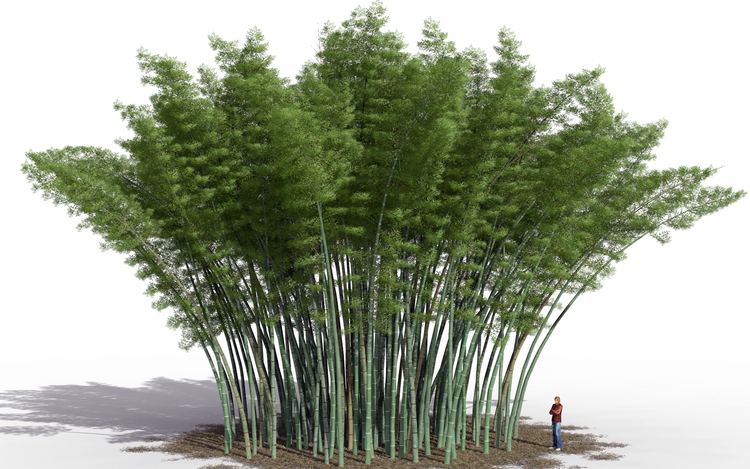Higher classification Phyllostachys | Scientific name Phyllostachys edulis Rank Species | |
Similar Phyllostachys, Tropical woody bamboos, Phyllostachys bambusoides, Phyllostachys nigra, Henon | ||
Phyllostachys edulis, moso bamboo, or tortoise-shell bamboo, or mao zhu (Chinese: 毛竹; pinyin: máozhú), (Japanese モウソウチク(孟宗竹)) is a temperate species of giant timber bamboo native to China and Taiwan and naturalised elsewhere. The edulis part of the Latin name refers to its edible shoots. This bamboo can reach heights of up to 28 m (92 ft). This particular species of bamboo is the most common species used in the bamboo textile industry of China. Its physical properties boast an average breaking tenacity more than three times that of cotton, wool, rayon, or polyester.
Contents

Ecology
Phyllostchys edulis spreads using both asexual and sexual reproduction. The most common and well known for this plant is asexual reproduction. This occurs when the plant sends up new culms from underground rhizomes. The culms grow quickly and reach a height of 90 ft or more (depending on the age and health of the plant). In mature individuals, the culms in young plants grow taller and wider in diameter as the general plant reaches maturity, but once the individual culm stops growing it will not grow again. P. edulis also flowers and produces seed, and it does so every half century or so, but it has a sporadic flowering nature and there are always a few individual plants in flower somewhere. The seeds fall from the mature culms in the hundreds of thousands and are quick to germinate. Mice, field rats and other rodents take notice of the bounty of seed, this results in the loss of many of the seeds, but within a few weeks the surviving few seeds would have germinated. The first culm from a seedling will not get much taller than a few inches at most, and may be as thin as 2mm, but with every new culm sent up from developing rhizomes, the grove of plants will grow in height and cane diameter.

Polyporus phyllostachydis (Sotome, T. Hatt. & Kakish.), is a fungus species, known from Japan, that grows on the ground on the living or dead roots of the Phyllostachys heterocycla bamboo.
Cultivars
Cultivars include:

Biochemistry
Compounds isolated from P. edulis include:


